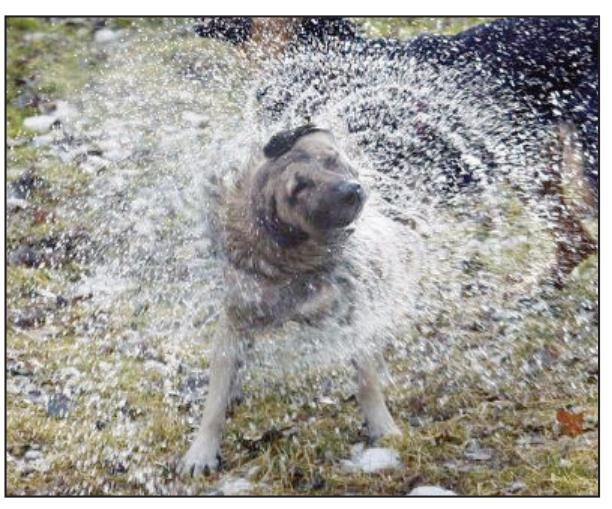When a wet dog shakes himself dry, he does something amazing. He hits just the right rhythm to maximize the drying effect with minimal effort.
The seemingly casual jiggle imparts enough centrifugal force to expel 70 per cent of the water in his coat in a fraction of a second.
This fact comes courtesy of experiments by David Hu, a professor of mechanical engineering at Georgia Tech. He and his students found that the highly tuned drying ability is shared by as many as 30 other furry mammals.
Hu thinks engineers can learn from some of the remarkable features that evolution has built into living things. He envisions harnessing this ability for devices that can dry or clean themselves, something like a Mars rover programmed to jiggle the dust off its solar panels.
He was initially inspired to study wet mammals by a toy poodle named Jerry, who was a gift to his current fiancée from her former boyfriend. Jerry ended up in Hu's lab, where high-speed cameras recorded and measured the rhythm by which he shook his coat dry.
Before Jerry, Hu had been interested in the way animals interact with water, but his focus had been on the insect world.
Thanks to the surface tension of water, many insects can easily get stuck in a puddle or pond once they get wet. Predatory bugs called water striders - the subject of Hu's doctoral thesis - get around this with hairy feet that barely touch the water's surface.
The adaptation allows striders to make dinner out of less wateradapted insects.
Hu realized that surface tension also trapped water on mammals, and shaking was a common adaptation that helped them deal with it. The project expanded from Jerry to guinea pigs, lab mice and a house cat.
In search of more mammals, Hu sent one of his graduate students to the Atlanta Zoo to spritz water on lions, tigers and bears, and record their drying techniques.
Fur, said Hu, is great for keeping animals insulated in cold air. It's not so good when it rains or when a furry animal falls into a frigid lake. Then, the fur can hold in cold water next to an animal's skin. A thoroughly wet 60-pound Labrador retriever, for example, holds about a pound of water.
Letting it dry by evaporation would sap energy equal to 20 per cent of the dog's daily calories.
If an animal needs to get rid of the water to stay warm, then it's much more efficient to shake.
Hu's study showed that most of the mammals that were observed did it. But the big surprise was that there was a predictable pattern across all these species - all imparted about the same amount of centrifugal force to expel water.
The force depends on the size of the animal and the frequency of the shake, Hu said, so to get the same force, little animals shake faster than big ones. Bigger dogs shake about three or four times a second; mice, about 30 times.
The water-expelling force also depends on how big the shakes are - their amplitude - said Hu, and most of the animals studied added oomph to each shake by having loose skin.
A dog, for example, shakes his spine through an angle of about 30 degrees, but his floppy skin swings through a full 90-degree angle. This, they measured by putting stickers on the dogs' backs and watching their motion.
Shaking is a useful adaptation, but did it show up in some ancestral mammal millions of years ago, or did it evolve independently in different lines? That's hard to say, said evolutionary biologist Frank Fish of West Chester University. Fish said mammals probably co-opted the ability to shake, which originated far back in the evolutionary tree. Sharks, for example, do some fast twisting to help them tear up their prey.
"We can see the ability to twist all the way back to the first vertebrate."



